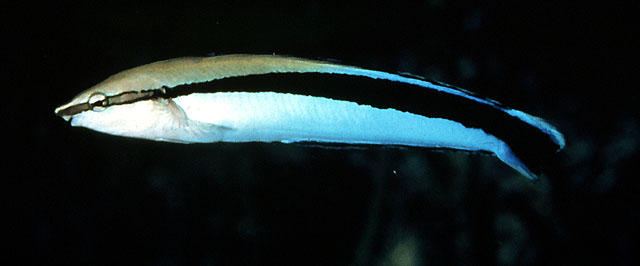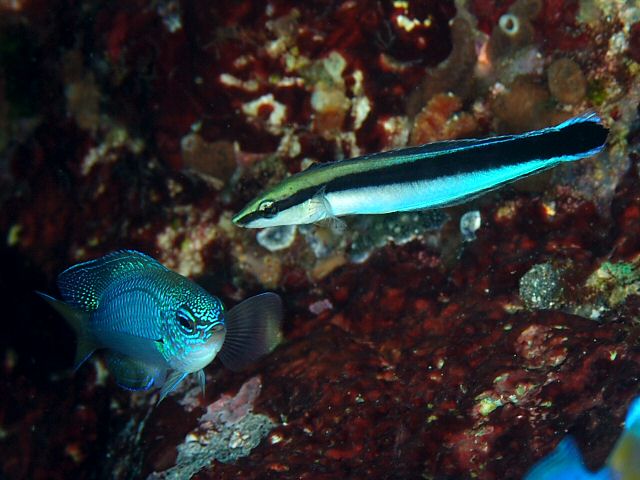�
�
�
���
Aspidontus taeniatus
Sabre-toothed Blenny
Kingdom
Animalia
Phylum
Chordata
Class
Actinopterygii
Order
Perciformes
Family
Blenniidae
Genus
Aspidontus
Species
Aspidontus taeniatus
Colours
Distinguishing features
Distinguishing features still need to be specified.
Size
- Up to 11.5 cm (TL)
Depth range
- From 3 m to 25 m
Synonyms
Similar taxa
-
Animalia:
Common Cleanerfish (species: Labroides dimidiatus)
Aspidontus taeniatus mimics the dance of Labroides dimidiatus before attempting to bite the underside of victim fish that are expecting to be cleaned. -
Animalia:
Common Cleanerfish (species: Labroides dimidiatus)
does not have a snout overhanging the mouth; mouth is terminal.
Interesting facts
- They are known to copy the motions of the cleaner wrasse that may induce other fish to come close, but it targets their scales or mucus for a feed, biting and quickly retreating to the corals before the victim realizes that it was tricked; experienced fish recognize imposters and often give it a chase.
Distribution
Distribution and habitat preferences
Inhabits lagoons, subtidal reef flats and outer reef slopes. Often lives in pairs in empty worm tubes or narrow holes.
Behaviour
Mimics the dance of the Common Cleanerfish, Labroides dimidiatus, before attempting to bite the underside of victim fish.
Web resources
References
- Cheney, K.L., A.S. Grutter and R. Bshary (2014). Geographical variation in the benefits obtained by a coral reef fish mimic, Animal Behaviour, 88: 85-90. LIRS catalog number 1708.
- Lassig, B.R. (1983). The effects of a cyclonic storm on coral reef assemblages, Environmental Biology of Fishes, 9(1): 55-63. LIRS catalog number 253.
- Siebeck, U.E. and N.J. Marshall (2001). Ocular media transmission of coral reef fish - can coral reef fish see ultraviolet light? Vision Research, 41: 133-149. LIRS catalog number 889.






